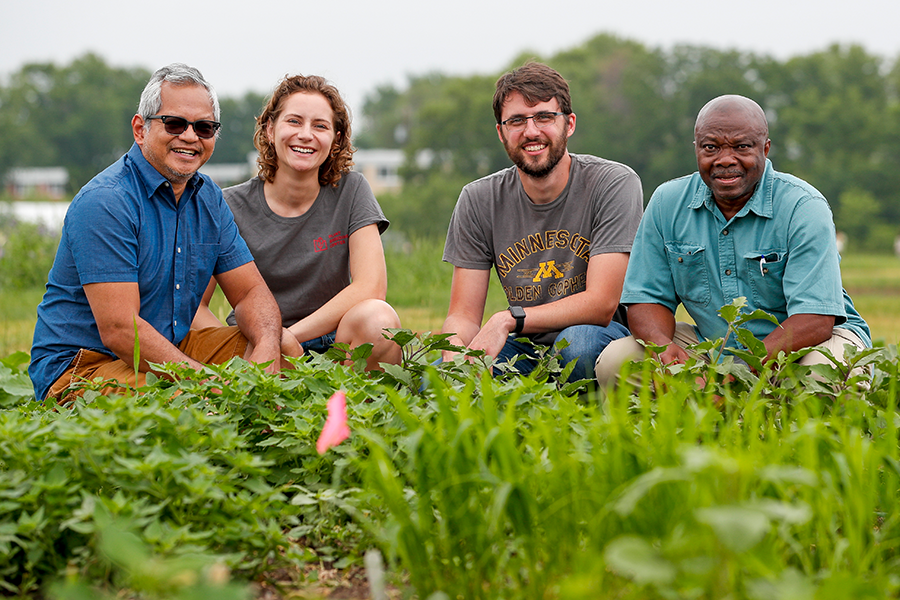
Let’s say you’ve settled in to a new land that doesn’t offer your favorite food, or even some of the staple foods that have offered comfort and nourishment for much of your life.
How far would you go for a taste of home?
Rex Bernardo has learned that for some, the answer can be halfway across the country. Bernardo, professor in corn breeding and genetics at the U of M’s College of Food, Agricultural and Natural Resource Sciences (CFANS), discovered that some African immigrants routinely drive from Wisconsin, North Dakota, and even Seattle to Twin Cities farmers markets to buy African vegetables grown and sold by Hmong-American farmers. Those vegetables are scarce here, and in many parts of the country they’re unavailable.
So Bernardo, director of CFANS’ Plant Breeding Center, decided last year to launch a new Vegetable Working Group to identify some native vegetable options for local immigrant farmers and consumers, and get test plants growing in the field.
“When the Plant Breeding Center came to fruition, I thought, this could be a good thing to do, and why not have it be a student-led project,” Bernardo says. “We’re starting from ground zero and we knew absolutely nothing about these vegetables. We didn’t know what they looked like, what the species were, or how they were utilized. So it’s been a tremendous learning effort for the students. They’ve been so good at hatching this vegetable breeding program.”
“For me, I was interested in a more applied [educational] experience, but also something that directly serves the community that I live in,” says Hannah Stoll, a PhD student in applied plant sciences. As the project has evolved, her focus has turned to building relationships within the immigrant farming community.
Cultivating African vegetables in a drastically different climate (with an abbreviated growing season, no less) presents a host of challenges. The first task has been determining the cultural—and horticultural—relevance of various crops, says Michael Burns, who like Stoll is a PhD student volunteering his time for the effort.
The group of about 7-8 graduate students and post-docs is working with crops like fluted pumpkin, bitter leaf, jute mallow, spider wisp, and holy basil. They’re tending a small patch of test plants in a field near the campus in St. Paul.
“We’re still in the really early stages,” Burns says. “We’re starting to move into the phase of, ‘How do we actually get these to grow in the field?’ Do we need to harvest them really early, do we need to transplant them? There are a ton of questions that we don’t have answers to. So we’re doing a lot of miniature experiments trying to make sure we’re growing these plants as best as possible.”
Chidi Chidozie is a Hennepin County Master Gardener with roots in Nigeria, so he brings elements of consultant, grower, and educator to the group. Since he works with community gardens and with people from diverse backgrounds in the county, he appreciates the University’s effort to identify vegetables that immigrants will heartily embrace, since not everyone wants to grow tomatoes.
Chidozie is hoping that the group is able to document in detail the process for cultivating these new-to-Minnesota vegetables. “That way the immigrant communities that are going to be using these plants can get the roadmap [for how to grow them],” he says.
Stoll affirms that down the road, the group can serve as an education resource for master gardeners as well as the communities they serve.
“Right now, we’re testing a lot of things,” she says. “Eventually, we want to do more breeding work, but for now the most important thing is just trying things out, building community, and making sure we’re learning.”
In addition to appealing to the palates of new immigrants, Bernardo knows that these native foods will sate a universal desire.
“For immigrants,” he says, “the foods that you grew up with—they are a strong and powerful reminder of home."
- Categories:
- Agriculture and Environment
- Agronomy
- Horticultural




